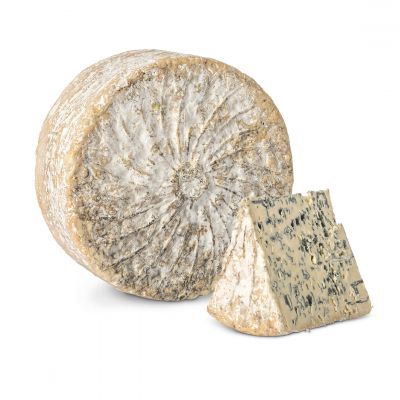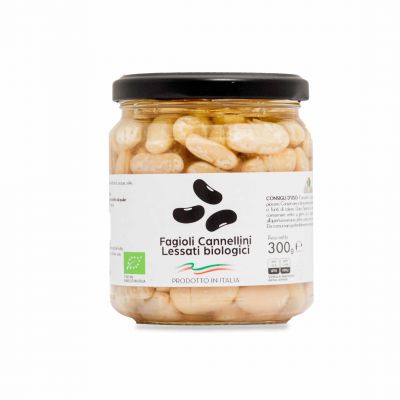“Cauliflower. A cabbage that’s truly blossomed.”
⏱ 2 minutes reading
A SHORT HISTORY OF THE CABBAGE
Known throughout the Mediterranean basin, where it grows naturally, cabbage and kale (we might be wrong but we will use the terms as synonymous) have been cultivated since 2000 BC. The Greeks and Egyptians were very partial to this vegetable, and believed that eating it raw allowed them to drink without becoming inebriated.
For the Romans, cabbage was a truly miraculous plant, capable of protecting against all evils and excesses, and of dispelling melancholy and sadness.
Cato loved it, Horace liked to fry it in a little lard, and the Roman gastronome Apicius cooked it with bunches of herbs and mixed spices. Even today, boil it with a few cumin seeds, some lemon juice or a little white vinegar and the smell will be so delicious, none will guess you’ve been cooking cabbage!
PART OF A LARGE EXTENDED FAMILY
Cabbage, cauliflower, white cabbage, broccoli, romanesco, savoy cabbage, Brussels sprouts, turnip greens, Pak choi, Chinese or Japanese cabbage, white and purple turnips, komatsuna (mustard spinach), cress and kale: these are some of the different varieties that belong to the cruciferous vegetables of the Brassica family.
Then there are the local cultivars: Cavolo Broccolo from Puglia, Ramoso from Calabria, the early White from Albenga, Verona Broccoli and Violetto from Sicily and Naples.
All of them have certain things in common, however: their sweet scent, their crunchiness and incredible nutritional value: cabbage is rich in vitamins (C, B, K, A, B3), fibre, minerals (calcium, iron, phosphorous, potassium, sulphur) but also in protein and folic acid.
What’s more, it has anti-anaemic, emollient, diuretic and detoxifying properties - all with very few calories! It can make you a little on the “windy” side, but social distancing is our ally here.
CAVOLO NERO RECIPE
Cavolo Nero is a variety of kale distinguished by longer stems compared to other varieties, with smooth or bumpy leaves. It is grown almost exclusively in Tuscany, in three varieties known as primaticcio, tardivo and verdino.
Its nutritional value is impressive: vitamins A and C (particularly in the blistered leaves) and the highest protein content of any of the cabbage or kale varieties.
After removing any particularly leathery stalks, cavolo nero can be boiled, steamed, stewed in a casserole dish and served with either butter or oil and lemon, used in soups, omelettes or crostini, or Tuscan-style in ribollita (bread and vegetable soup) and steak with cavolo nero.
A PIECE OF ADVICE
There are many recipes on the internet that feature cavolo nero and begin with removing the leathery stalks, followed by “boil for 20 minutes”. There’s really no need for this: first, wash the leaves and take away the stalks - they should come out easily. Then simply take a large saucepan, fill it with the clean leaves and sprinkle with a pinch of salt: the action of the salt will draw out the moisture from the leaves.
Just a few minutes’ cooking - 5 minutes at most - will give you crunchy, green leaves, instead of a brownish stodge.
But now it’s time to stop chatting, put on our aprons and get ready for the recipes we’re going to prepare together: some of them longer, others quicker, so no excuses!
Anna Maria Pellegrino
Chef and Foodblogger
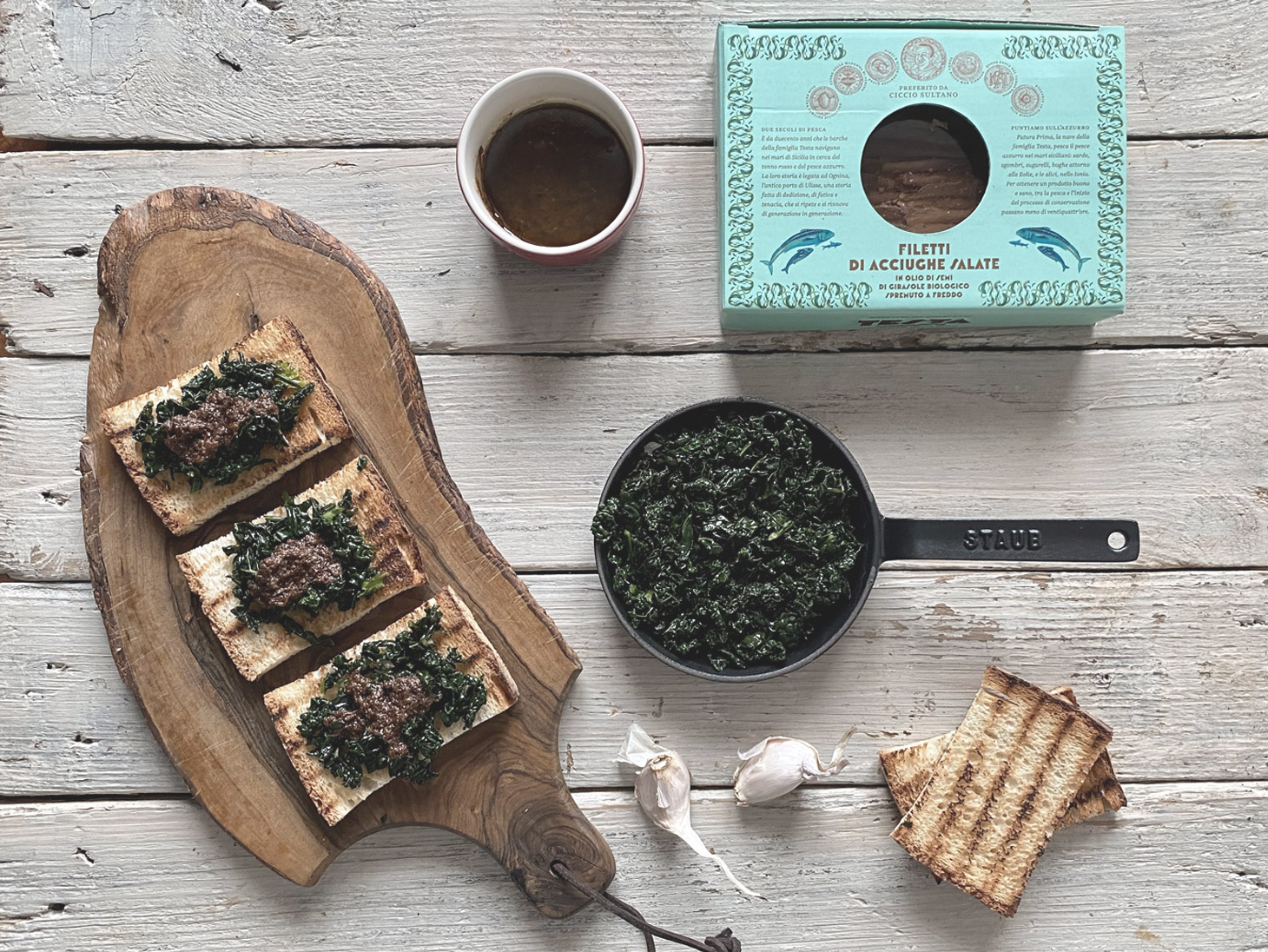
TUSCAN-STYLE CROSTINO
COURSE: starter, vegetarian
SERVES: 4 people
LEVEL: simple
PREPARATION TIME: 20 minutes
COOKING TIME: 10 minutes
INGREDIENTS
300 g cavolo nero
4 slices of Tuscan bread
8 Testa anchovy fillets
2 cloves of garlic
extra virgin olive oil and olive oil
METHOD
Wash the cavolo nero leaves, transfer them to a large saucepan, add a pinch of salt and cook over on low heat: you’ll see that the leaves cook in their own moisture. Place them in a colander to drain, then shred them using a sharp knife.
Crush a clove of garlic in its skin and heat a couple of tablespoons of olive oil in a saucepan. Add the garlic and the sliced cavolo nero. Fry for several minutes, then set aside.
Meanwhile, place the anchovy fillets and a little of their oil in a pan and heat gently, crushing and stirring the anchovies with a wooden spoon to obtain a smooth sauce, then set aside.
Toast the bread and rub with the second clove of garlic. Brush with a little of extra virgin olive oil, divide onto three plates, add a spoonful of greens and top with
the sauce.
Serve immediately.
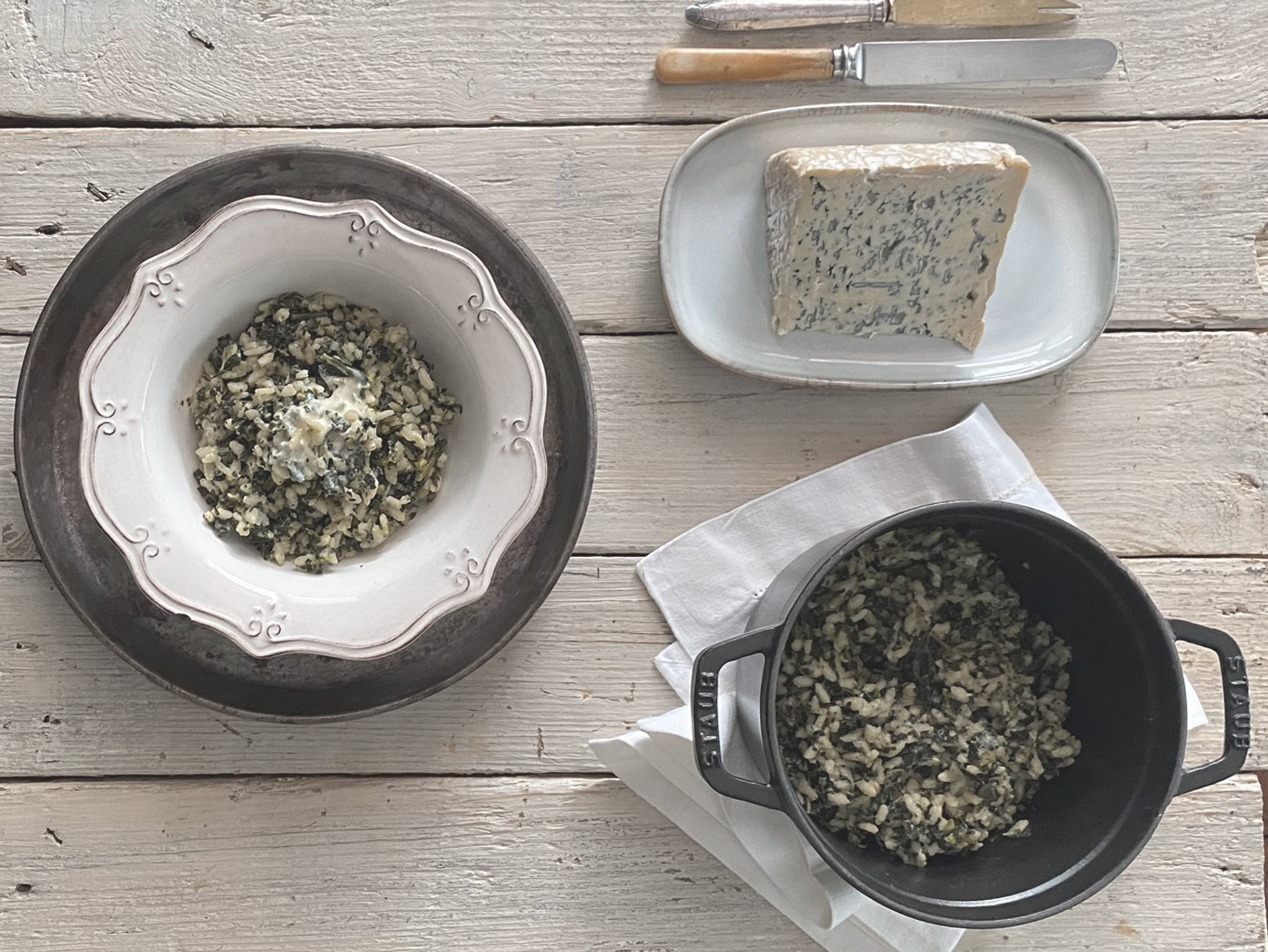 RISOTTO WITH CAVOLO NERO AND BLUE DI NICOLETTA
RISOTTO WITH CAVOLO NERO AND BLUE DI NICOLETTA
COURSE: main course
SERVES: 4 people
LEVEL: simple
PREPARATION TIME: 20 minutes
COOKING TIME: 20 minutes
INGREDIENTS
300 g cavolo nero
280 g of Cascina Oschiena Carnaroli rice
50 g shallots
50 ml dry white wine
30 g of lardo di Colonnata
80g of Blue di Nicoletta
salt
vegetable stock
Pri.ma Bio essence of thyme
METHOD
Wash the cavolo nero leaves, transfer them to a large saucepan, add a pinch of salt and cook over a low heat: you’ll see that the leaves cook in their own moisture.
Place them in a colander to drain, then shred them using a sharp knife. Slice the shallots and cube the cheese, removing the rind.
Melt the lard in a frying pan, cook the shallots until they soft and fry the cavolo nero. Set aside.
Meanwhile, dry-fry the rice for 5 minutes, pour in the white wine and continue to cook for around 10-12 minutes adding the hot vegetable stock, add the cabbage and cook the risotto for a further 2 minutes.
Remove from the heat and stir in the Blue di Nicoletta cheese, cover and leave to rest for 2 minutes.
Serve immediately with a few drops of thyme essence.
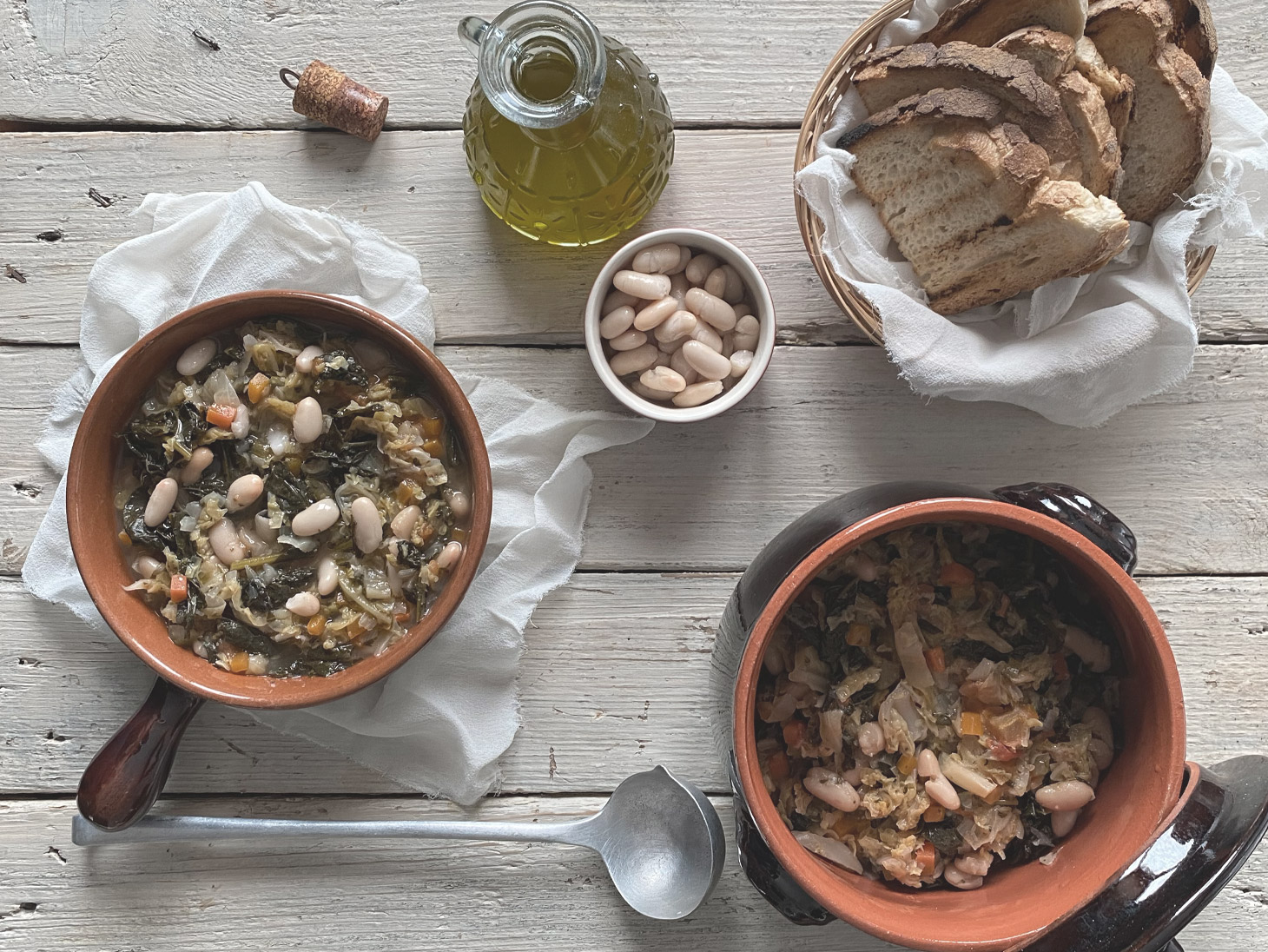
RIBOLLITA, THE TRADITIONAL TUSCAN SOUP
COURSE: main course, vegan
SERVES: 6 people
LEVEL: simple
PREPARATION TIME: 20 minutes
COOKING TIME: 1 hour 15 minutes
INGREDIENTS
300 g cavolo nero
300 g white cabbage
300 g savoy cabbage
200 g DelSanto Cannellini beans
200 g carrots
200 g white onion
200 g celery
200 g fresh tomatoes
A bunch of parsley and a bunch of basil
A pinch of calamint or dried mint
extra virgin olive oil
sliced Tuscan bread
salt and freshly-ground black pepper
METHOD
Wash the vegetables, roughly chop the celery, carrots and onions; cut the tomatos into pieces; finely shred the cavolo nero, savoy cabbage and white cabbage.
Drain 2/3 of the cannellini beans, press them through a sieve and set aside.
In a casserole dish, heat 3 tablespoons of oil and cook the chopped celery, carrot and onion until golden. Add the chopped tomatos herbs and mix well. Add the remaining vegetables and the herbs (basil, parsley and calamint). Cover with two glasses of water and continue cooking for around 30 minutes.
Add the puréed beans and continue to cook for a further 30 minutes . Lastly, add the whole cannellini beans and cook for another 10 minutes. Season and allow to rest with the lid on.
The following day, reheat the soup until it simmers (the Italian word for this is “ribollire” - hence the name “ribollita”). Place the slices of stale or toasted bread in a tureen, pour the soup over them and serve immediately with some freshly-ground pepper and a drizzle of extra virgin olive oil.




